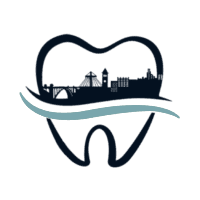In general dentistry, there is a broad range of treatments covered to provide patients with well-rounded services, including restorative, orthodontic, and periodontal care. However, one aspect of general dentistry that isn’t always focused on is conservation. Most procedures used in primary care practices tend to be fairly invasive, and the tools often used to perform procedures tend to cause unnecessary damage to healthy tissues. Because of this, some dentists have started opting into conservative dentistry as part of their practice, using minimally invasive techniques to produce better results.
How Can Conservative Treatments Be Used In Primary Practices?
Conservative dentistry, in short, focuses on using minimally invasive approaches to solve complex problems with oral health. This means that in some scenarios, the most obvious answer to most dentists wouldn’t necessarily be the best answer for the patient’s health. A tooth that maintains pulp and dentin health may not need to be extracted, even if the outer enamel is severely infected with tooth decay. However, most general dentists would choose tooth extraction over other methods not only because tooth extractions are reliable but also because they are within the dentist’s frame of reference, or set of skills and knowledge, to do for the patient.
In these cases, conservative dentistry challenges this notion, improving dental care by making it more personalized for the patient and working to maintain healthy tooth structures as much as possible. This means that other treatment methods need to be further explored, and for general dentists looking to expand their practices, conservative dentistry provides more flexibility when faced with specific scenarios of tooth decay and disease.
The Types of Minimally Invasive Treatments
Minimally invasive treatments refer to the idea of conserving tooth structures as much as possible. These types of treatments tend to incorporate different tools and techniques that are not part of standard care and have a specific focus in mind. Preservation is the primary goal of conservative dentistry, and with these innovations, patients can experience more versatility with their dental care and experience higher quality services.
So, what counts as minimally invasive? Some practices have started investing in this idea, looking to less-common forms of technology to help broaden their horizons to meet patient needs. These treatments include:
- Laser Treatments: Laser dentistry is a subcategory of minimally invasive dentistry that remove the need for rotary drills and scalpels to target areas of decay and cauterize wounds more accurately. Laser dentistry has also started to be used for improving tooth appearance, removing signs of decay and discoloration with a speedy recovery.
- Silver Diamine Fluoride: This application works to seal in and remove cavities that begin to develop inside the tooth. It’s also been used as a desensitizing agent, which helps heal sensitive teeth prone to enamel decay.
- Resin Sealants: Alongside silver diamine fluoride, resin sealants have begun being used to replace the need for tooth extractions by filling in the porous areas of decay and killing bacteria inside the tooth with ease.
- Veneer Restorations: In cases of sensitive enamel along the front teeth, some dentists have opted to choose veneers as an alternative for correcting dental problems.
General dentistry helps maintain your teeth and improve your oral health, and with conservative dental approaches on the rise, it’s important to see if your local dentist will be willing to go the extra mile to save your teeth.



